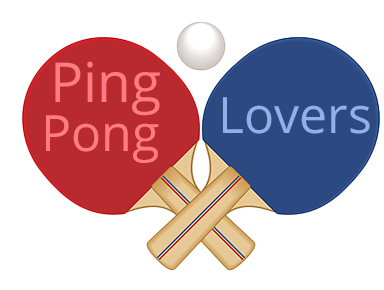Introduction to Ping Pong
Welcome to the exciting world of Ping Pong! Also known as table tennis, this game is a fun and engaging sport that can be enjoyed by people of all ages. Whether you’re just starting out or looking to improve your skills, understanding the basics and the history of Ping Pong can provide a solid foundation for your journey.
-
Understanding the Basics of Ping Pong
Ping Pong is a sport that involves two or four players hitting a lightweight ball back and forth across a table using small rackets. The game takes place on a hard table divided by a net. The objective is to score points by making the ball land in the opponent’s half of the table and ensuring they cannot return it. The game requires quick reflexes, strategic thinking, and precise control. Learn more about the basics of Ping Pong here.
-
History and Evolution of Ping Pong
The game of Ping Pong originated in the late 19th century in England as a parlor game among the upper-class as an after-dinner amusement. It has since evolved into a competitive sport that is played worldwide and even features in the Olympic Games. The equipment used, rules, and style of play have all evolved over time, contributing to the dynamic nature of the sport. Discover more about the history and evolution of Ping Pong here.
As we delve deeper into the world of Ping Pong, we will explore more about the techniques, strategies, and tips that can help you improve your game. So, whether you’re a beginner or an experienced player, there’s always something new to learn about this fascinating sport.
Beginner’s Guide to Ping Pong
Welcome to our beginner’s guide to Ping Pong. This guide is designed to help you understand the basics of the game and get you started on your journey to becoming a Ping Pong enthusiast. Let’s dive right in.
Ping Pong for Beginners
Starting a new sport can be daunting, but don’t worry. We’ve got you covered. Here are some key areas to focus on as a beginner:
- Learning Ping Pong basics
- Essential equipment for Ping Pong
The first step to mastering Ping Pong is understanding the basic rules and techniques. This includes knowing how to serve, return, and score. The game is played on a table divided by a net, with players standing on opposite ends. The objective is to hit the ball so that it goes over the net and bounces twice on the opponent’s side of the table. For a more detailed explanation, check out this Wikipedia article on Ping Pong.
Before you can start playing, you’ll need some essential equipment. This includes a Ping Pong table, a net, Ping Pong balls, and a paddle for each player. The paddle, also known as a racket, is particularly important as it can significantly affect your game. It’s made up of a wooden blade covered with rubber on both sides. The type of rubber can influence the speed and spin of the ball, so choose wisely. For beginners, we recommend a paddle that offers good control to help you learn the basics.
Remember, the key to becoming good at Ping Pong is practice. So, get your equipment, learn the rules, and start playing. Before you know it, you’ll be a Ping Pong pro.
Ping Pong Player Skills
As a beginner in Ping Pong, there are two crucial skills you need to focus on to improve your game. These are understanding the importance of agility and speed, and mastering the art of spin and control.
- Understanding the Importance of Agility and Speed
Agility and speed are vital for any Ping Pong player. They allow you to move quickly and respond to your opponent’s shots effectively. The faster you can move, the more likely you are to reach the ball in time and return it successfully. Studies have shown that professional Ping Pong players can move at speeds of up to 15 miles per hour during a game. As a beginner, you might not reach these speeds, but with practice, you can significantly improve your agility and speed.
- Mastering the Art of Spin and Control
Spin and control are also essential skills in Ping Pong. By applying different spins to the ball, you can make it more difficult for your opponent to return your shots. Control, on the other hand, allows you to place your shots accurately, making it harder for your opponent to predict where the ball will land. Research has shown that a well-executed spin can make the ball rotate at up to 9000 revolutions per minute. This level of spin can significantly affect the ball’s trajectory and bounce, making it a powerful tool in your Ping Pong arsenal.
In conclusion, mastering agility, speed, spin, and control can significantly improve your Ping Pong game. As a beginner, focus on these skills during your practice sessions, and you’ll see a noticeable improvement in your performance.
Understanding Ping Pong Players
When it comes to the game of Ping Pong, it’s not just about the paddle and the ball. The player’s characteristics play a significant role in their performance and success. Let’s delve into the key attributes that define a successful Ping Pong player.
Ping Pong Player Characteristics
There are two main areas that define a successful Ping Pong player: their physical attributes and their mental toughness. Both are equally important and contribute to the player’s overall performance.
- Physical attributes of a successful Ping Pong player
- Mental toughness and strategic thinking in Ping Pong
A successful Ping Pong player typically has a good level of physical fitness. This includes agility, quick reflexes, and excellent hand-eye coordination. These attributes allow the player to move swiftly around the table, respond to the opponent’s shots quickly, and accurately hit the ball. Stamina is also crucial as matches can last for a long time.
Physical fitness alone won’t make a successful Ping Pong player. Mental toughness and strategic thinking are equally important. A player needs to be able to stay focused and calm under pressure, think quickly, and make strategic decisions during the game. This includes deciding when to attack, when to defend, and how to outsmart the opponent. A good understanding of the game’s rules and tactics is also essential.
Understanding these characteristics can help beginners identify their strengths and areas for improvement. Remember, practice and perseverance are key to mastering these attributes and becoming a successful Ping Pong player.
Profile of a Ping Pong Player
- Case Study: Examining the profile of a professional Ping Pong player
- Key takeaways from the player’s techniques and strategies
- Start Early: Ma Long started playing Ping Pong at a young age. The earlier you start, the more time you have to hone your skills.
- Practice Regularly: Consistent practice is key to improving your game. Ma Long practices for several hours every day.
- Mental Toughness: Ping Pong is not just a physical game. It requires mental strength to stay focused and make strategic decisions.
- Understand the Game: A deep understanding of the game and its rules can give you an edge over your opponents.
Let’s take a closer look at the profile of a professional Ping Pong player, Ma Long. Ma Long is a Chinese Ping Pong player who has been ranked world No. 1 for a total of 64 months, the most by any male player in the history of table tennis. His agility, speed, and precision make him a formidable opponent on the Ping Pong table.
Ma Long started playing Ping Pong at a very young age of 5. His dedication and practice have helped him master the game. He is known for his quick reflexes and powerful forehand loops. He uses a shakehand grip and primarily uses the DHS Hurricane 3 NEO rubber on his forehand for maximum spin and speed.
His success is not just due to his physical prowess but also his mental toughness. He is known for his ability to stay calm under pressure and make strategic decisions during the game. This case study shows that becoming a professional Ping Pong player requires a combination of physical skills, mental strength, and a deep understanding of the game.
Here are some key takeaways from Ma Long’s techniques and strategies that can help beginners improve their game:
Ping Pong Player Techniques
Mastering the game of Ping Pong requires not only understanding the rules but also learning effective player techniques. These techniques can significantly improve your performance and make the game more enjoyable. Let’s delve into some essential Ping Pong player strategies that can help beginners enhance their gameplay.
Ping Pong Player Strategies
There are two main strategies in Ping Pong: offensive and defensive. Knowing when to use each one can make a big difference in your game. Let’s explore these strategies in more detail.
- Understanding offensive and defensive strategies in Ping Pong
- How to adapt your strategy based on your opponent
An offensive strategy in Ping Pong involves aggressive play, aiming to score points by hitting the ball with power and precision. This strategy often includes fast serves, powerful smashes, and quick returns. On the other hand, a defensive strategy focuses on preventing the opponent from scoring. It involves blocking the opponent’s shots, returning the ball with less speed, and trying to force the opponent into making errors. Wikipedia provides a comprehensive guide on Ping Pong tactics that can help you understand these strategies better.
Adapting your strategy based on your opponent is crucial in Ping Pong. If your opponent plays aggressively, using a defensive strategy might be more effective. Conversely, if your opponent is more defensive, an offensive strategy could help you score more points. Observing your opponent’s playing style and adjusting your tactics accordingly can give you an edge in the game.
In conclusion, understanding and applying these Ping Pong player techniques can significantly improve your game. Remember, practice is key to mastering these strategies. So, grab your paddle and start practicing!
Conclusion: Mastering the Game
As we conclude this comprehensive guide, it’s time to reflect on the journey we’ve taken together. We’ve covered a lot of ground, from understanding the basics of Ping Pong, to familiarizing ourselves with the techniques employed by professional players. Now, let’s recap the key skills and techniques we’ve discussed and look at the next steps in your Ping Pong journey.
- Recap of the key skills and techniques discussed
- Next steps in your Ping Pong journey
We started with the basics, learning about the history and rules of Ping Pong. We then moved on to understanding the different player types and the importance of developing a unique playing style. We’ve discussed various techniques such as the forehand and backhand strokes, the serve, and the smash. We’ve also highlighted the importance of footwork, agility, and strategic thinking in the game.
Now that you’ve grasped the fundamentals, it’s time to put your knowledge into practice. Start by playing casual games with friends or family. As you gain confidence, consider joining a local Ping Pong club or participating in amateur tournaments. Remember, the key to mastering Ping Pong lies in consistent practice and a willingness to learn from every game. Don’t be disheartened by initial setbacks; even the greatest players started as beginners.
In conclusion, Ping Pong is a game of skill, strategy, and finesse. It requires dedication and practice, but the rewards are well worth the effort. So grab your paddle, and let’s make every game count!

